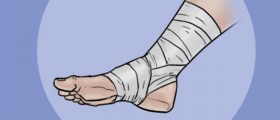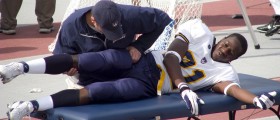
Pulled chest muscle is a type of injury that leads to damage of any muscle in the chest area. The damage can be in a form of a tear of only few muscle fibers while some patients end up with more complex damage, when more muscle fibers are torn. In the majority of cases, the damage is reported to occur at the joining area of chest muscles and their tendons.
Pulled chest muscles in an injury predominantly affecting athletes as well as individuals engaged in manual labor of any kind. The symptoms of the injury vary and usually occur within 24 hours after the injury.What are Symptoms of Pulled Chest Muscle?
The most prominent symptom of pulled chest muscle is pain. The pain may be felt at rest and it tends to become even more intensive if the injured muscle contracts, is stretched or used in any way. The pain is the most severe if one performs pushing motions such as bench pressing or push-ups.
Furthermore, the injured muscle temporary becomes weak. How much strength will be lost depends on the severity of an injury.
Apart from the previous two symptoms a person who has experienced pulled chest muscle may also report swelling in the injured area. Muscle spasm occurs as well.
The X ray of the injured area may point to the presence of calcification of muscles and tendons of the injured area while physical exam and palpation of the affected muscle can be accompanied by a crepitation, a cracking sound which develops during palpation of the particular muscle.Classification of Pulled Chest Muscle
Depending upon the severity of the injury, pulled chest muscle can be classified into three grades.
Grade 1 of the injury features with mild discomfort. The person does feel pain in the injured area and preserves the same range of motion as it was prior to the injury. In grade 2 pulled chest muscle the pain is moderate. The injured area is most frequently inflamed and subsequently swollen. The injured person reports sharp pain during high level of any kind of physical activity. And finally, in grade 3 the patient complains about excruciating pain and muscle spasms. The muscle is tender, swollen and the surrounding skin is bruised.
The very grade of the injury is characterized by different damage to the muscle. Namely, if the muscle is slightly pulled, there is no tear while moderate and severe injury leads to tears of the affected muscle, tendon or their attachment to the rib. In the most severe injury the tendon-muscle- attachment is ruptured and requires surgical repair.
- www.nhs.uk/conditions/chest-pain/
- www.nhs.uk/conditions/costochondritis/
- Photo courtesy of craig Cloutier by Flickr: www.flickr.com/photos/craigcloutier/3324010847/

















Your thoughts on this
Loading...